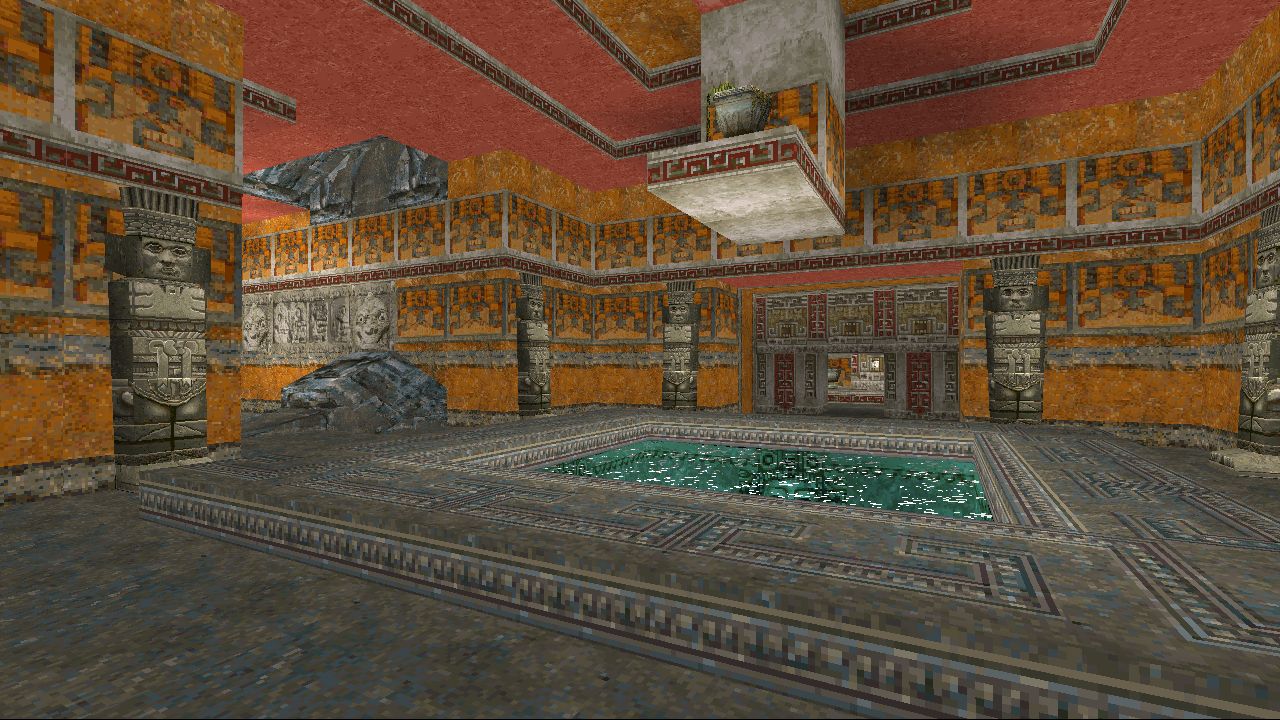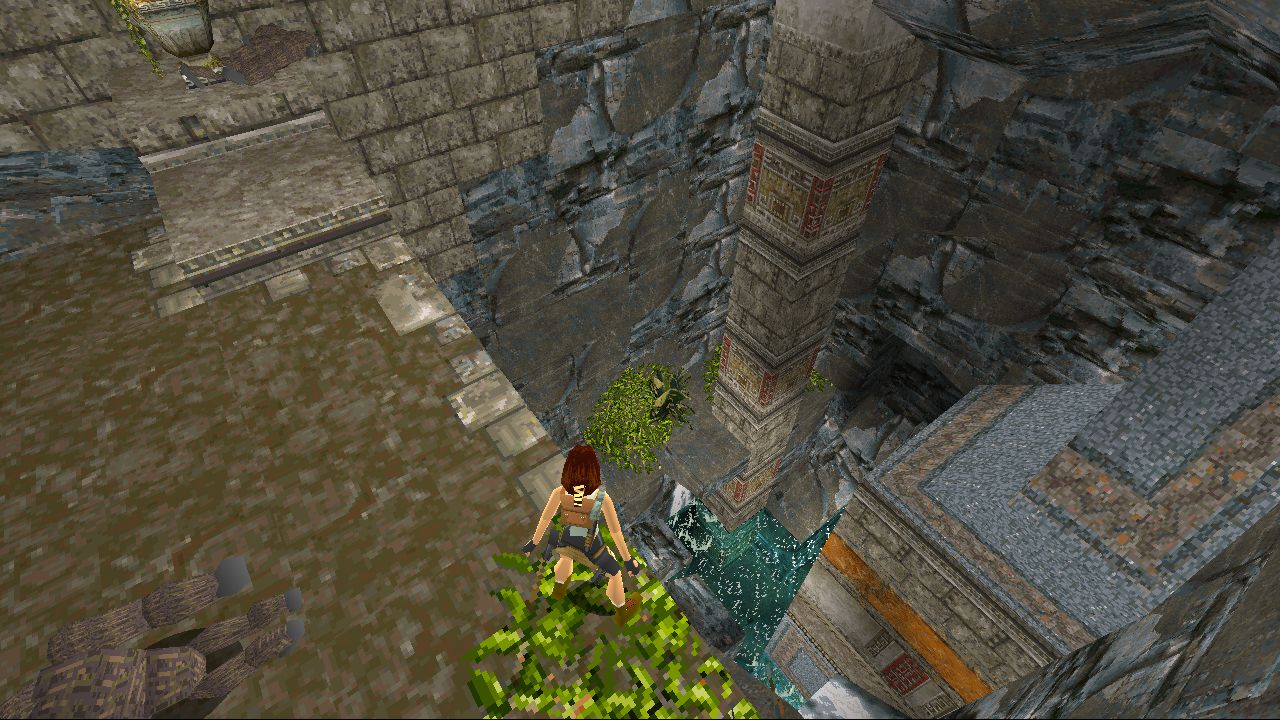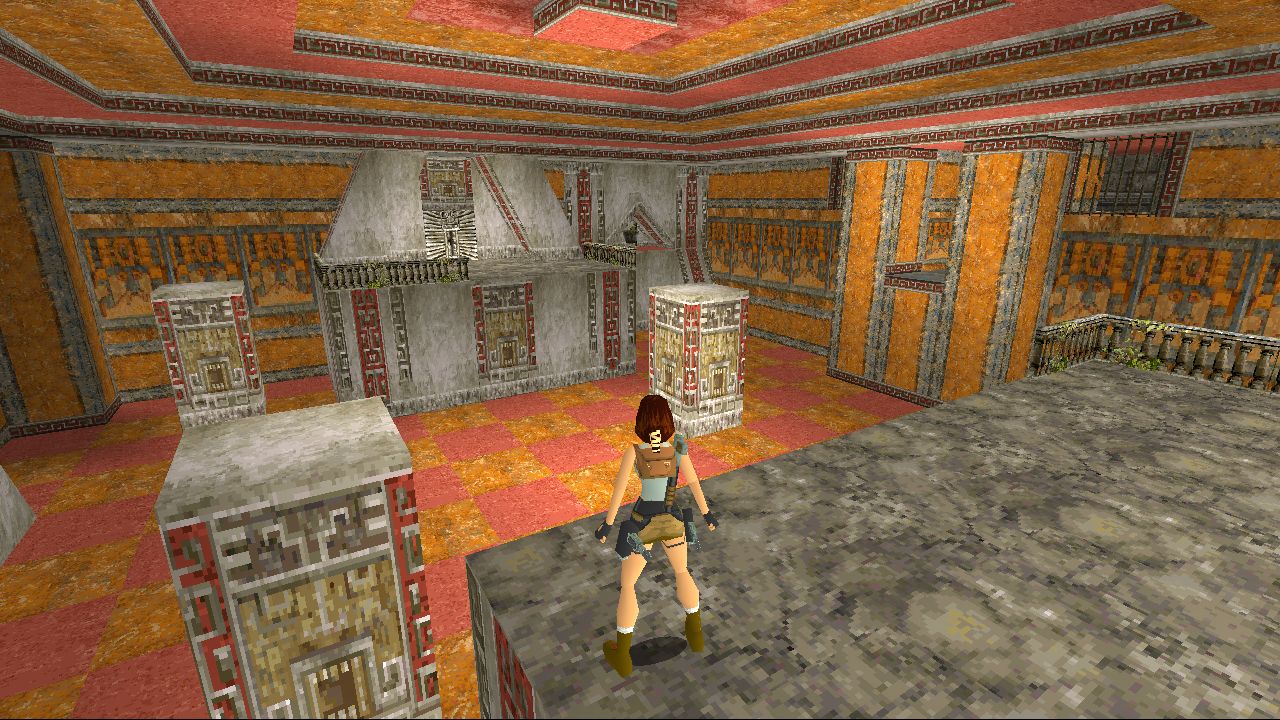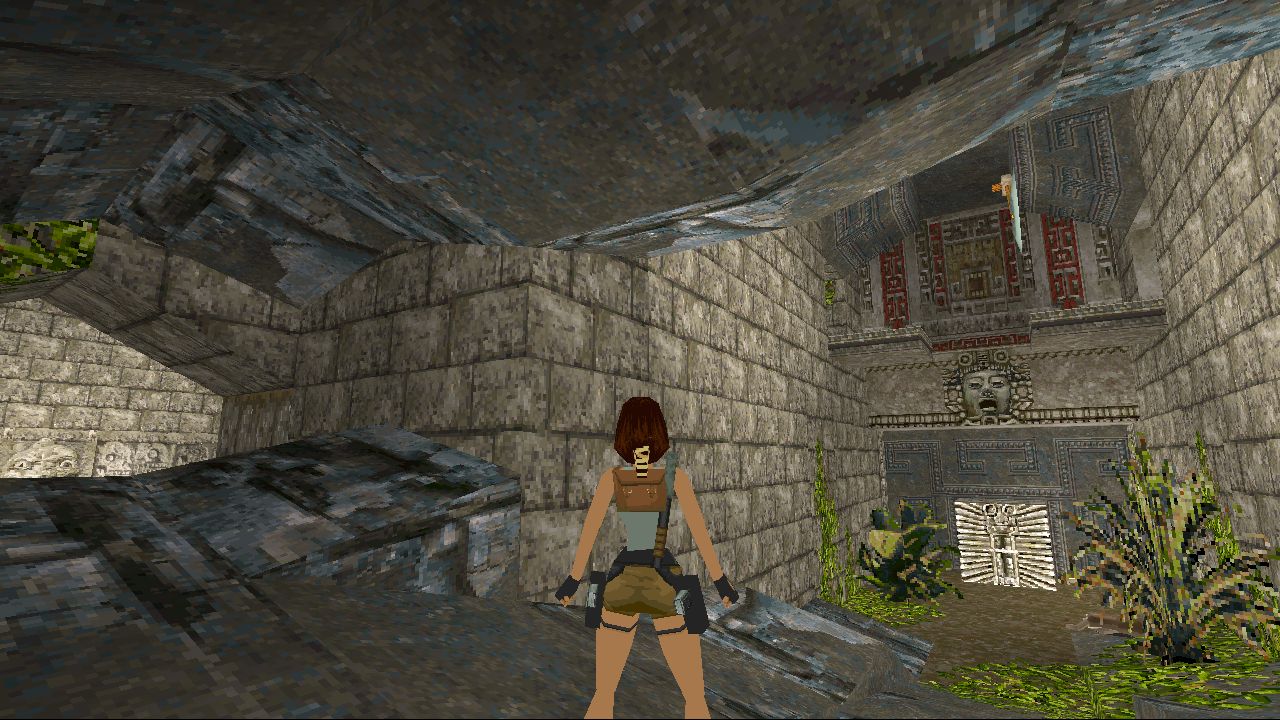Introduction
An unexplored area of Vilcabamba has been uncovered due to recent earthquakes. Upon learning of this news Lara decides she should head back to Peru and revisit these ruins for new treasures. She wants to seek out a relic carved in pure gold but as it turns out, that will not be the only thing that still remains buried in the lost city.
Review
It has always been awkward trying to get into a whole new branch of custom levels for a game with decades worth of releases, uncertain where to even begin and ease into this new world. I’ve known about the Tomb Raider mapping scene for several years, but never took the plunge up until now out of concern that I’d dive into too many difficult levels that expect a deeper understanding of the game’s movement mechanics to succeed and then be put off. Because I enjoy the core simplicity of the first game and as anything beyond that already seemed daunting enough, I eventually landed upon RUINS. This turned out to be a good pick for remaining inline with my current level of experience. Taking place around an unexplored part of Vilcabamba already offers up a familiar theme to get settled in, while being quite an involved adventure despite only spanning a singular level. Most of that is due to an importance around observing your surroundings to discover potential routes to move ahead, as some of these can be hidden within plain sight. The original levels were typically clear about your direction, so having to earn that here was a nice change for progression. Knowing where I must go or what I needed on hand was never an issue, only figuring out the steps to achieve those goals necessitated paying closer attention to each room and finding something out of place or taking note of flat surfaces I could reach from different positions. Many times this had me stumbling onto additional paths for secrets and extra supplies, sometimes even thanks to a camera perspective change, hinting where these might be found.
The journey through these RUINS can be broken down into three distinct segments based around a particular goal you’ll be working toward; Opening up the large gates sealing the city from entry; Stealing the relic held within a locked vault; and then making your escape by flooding the final chamber and climbing out. Each of these utilise varied visuals following schemes suited to their locales without diverting too far from the original game’s template design. Large grey stone and brick structures make up the bulk of construction with smaller settlements dotted around the outskirts, all while entombed within cavernous rock as if being consumed over time. Setting foot into the city proper offers up more colourful ornate and decorative elements while the back exit looks like an old cistern. There are many signs that the city is crumbling apart, walls and ceilings that have collapsed and plant growth making claim of its territory. Jumping and climbing from point to point are your essential navigational tools as there aren’t any mind twisters here, besides one dedicated chamber utilising these same skills while remembering the correct order for positioning blocks. Completing segments otherwise involves hunting down keys, of which can be hidden at some tricky spots. It took time figuring out how to access the rooftop key, both misjudging distances and timing my jump to get past a teeth-door trap. I even got lost having looped back around to the city gates without making any further progress, retracing my steps only to discover a secret stash along a route I assumed was the proper way. Eventually got back on track after stumbling across a smaller gap to resurface from underwater, honing the point that you have to pay attention to what’s around and not just by what is seen ahead.
There isn’t much of a focus around combat besides enemies being used to spring ambushes upon entering new areas, sometimes awkwardly spawning a little too close for comfort making it apparent they’ve been phased in from thin air. Wolves show up as your initial foe but serve only as minor set dressing before being replaced with Raptors and Gorillas as your main problem. Most of these encounters are there to be an inconvenience before concentrating on how to proceed, such as fighting a Gorilla duo near a long drop or Raptors denying you from climbing out a pool. Mummies also show up but by that point you’ll have an advantage in weaponry and positioning to tackle them without a fuss. Traps were my number one cause of failures often landing on spikes and cut down by bladed pendulums. There’s even a devious moment underwater after pulling a lever, almost thinking I’d been tricked into blocking my exit, an environmental effect I’ve since become curious how other custom missions take advantage of it beyond expectations. Coming across a room full of boulders also had me sweating buckets having too many close calls leaping around like a frog to avoid being crushed, but I do like how these traps were contextual based on the earthquake backstory, restricted to caves that represent a collapsed area.
Conclusion
Although getting into a new stream of custom creations was daunting, RUINS is a great entry level with familiar scenery and an emphasis around exploration while paying attention to anything out of place. Puzzles take a back-seat and combat remains inconvenient but simple to manage, most of the experience is around fetching keys and learning how to navigate without too many expectations on movement skills.



